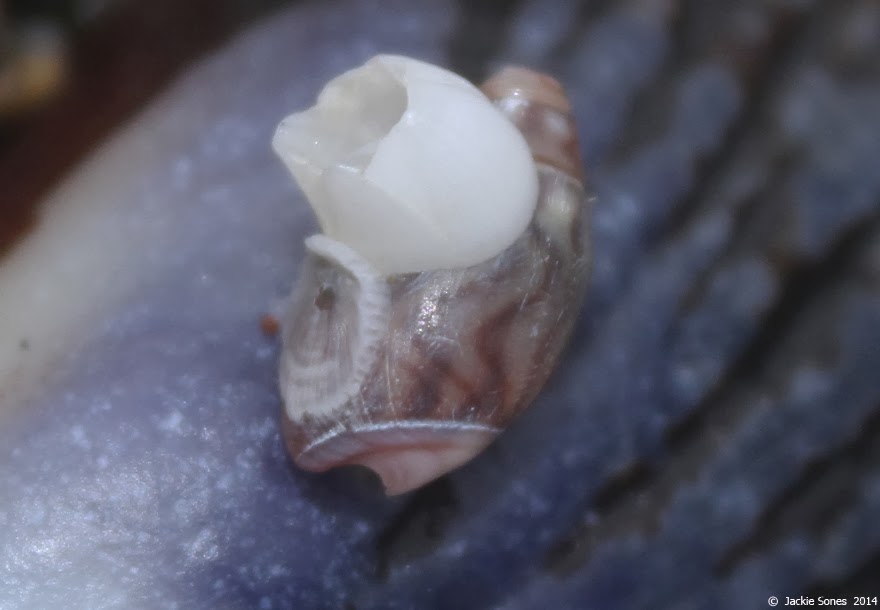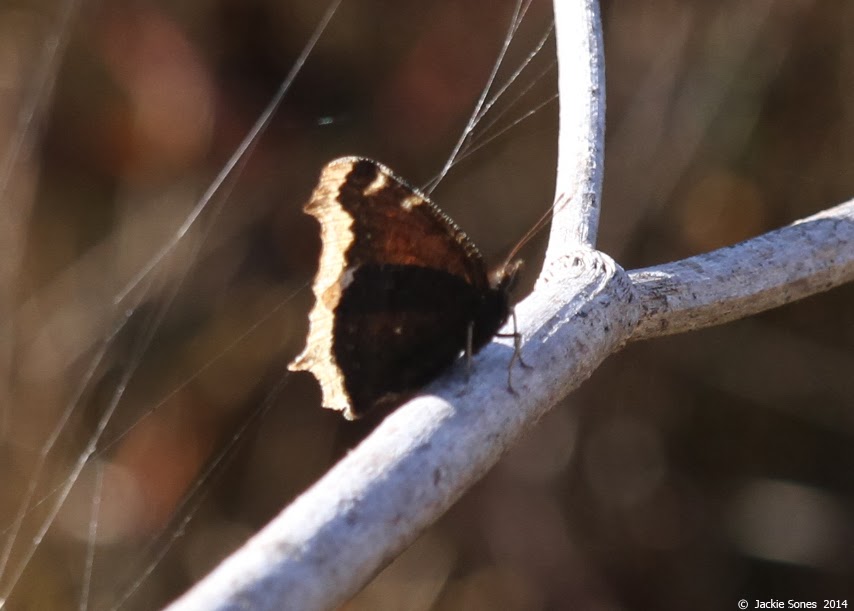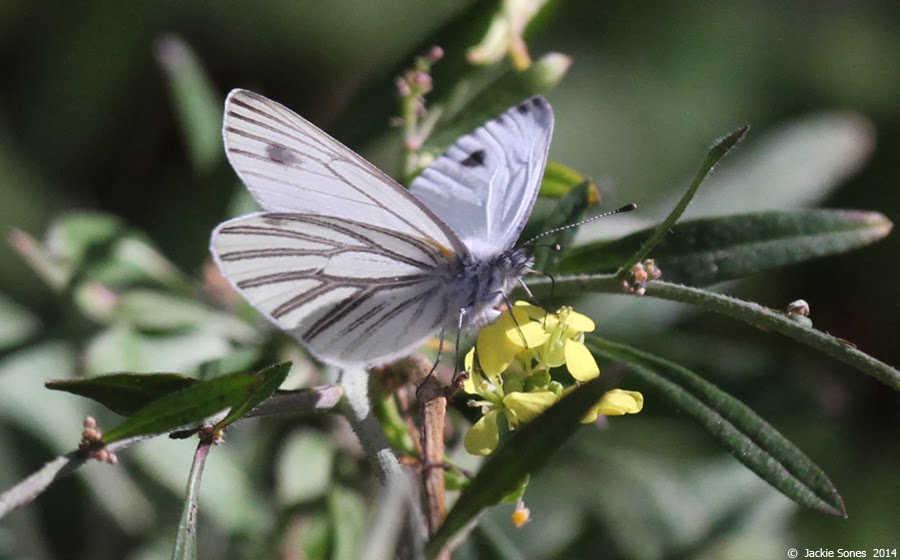This is going to be an identification challenge, but I figure it's more fun for you to try first than to be told outright. To set the scene, I took this photo around 5 p.m. on 18 January 2014. These birds were flying over the salt marsh between the Bodega Bay Post Office (or Bodega Harbour Yacht Club) and Doran Beach, adjacent to what's now called the Bird Walk Coastal Access Trail.
I liked all of the different positions of the birds in the picture above. And I hope you sensed that they were flying quickly and somewhat erratically.
A few minutes before, when the light was a little better, I did manage one picture of a couple of birds that might help you with the identification:
I won't be surprised if this is still difficult. These aren't great pictures! But it's a fun story, so I can't help showing them.
These are American Pipits (Anthus rubescens). Some time ago during a bird survey, I accidentally flushed a large flock of pipits from this same salt marsh. It made me wonder if they roosted there at night. I meant to go back and check, but hadn't managed to do so. Tonight I was in the area just before sunset and noticed a very large flock of songbirds descending towards the marsh. Pipits! It was true! They do roost in the marsh!
There are a number of things that amaze me about this behavior and capture my curiosity:
I've been birding for a while and have been in areas where pipits spend the winter on beaches and where salt marshes occur nearby, but I don't recall hearing about very large flocks of pipits roosting in salt marshes. Have I just missed it? Does it occur elsewhere? Or is there something special going on in Bodega Harbor?
When you see pipits feeding on local beaches in the Bodega Bay area, you might see 1 or 2 birds, or maybe half a dozen or so. But the flock I saw coming into roost was much larger. And it appeared that birds were coming in to join the flock from different directions, i.e., that this might be a communal roost. (I'm not completely sure about that, but it would be worth pursuing.)
I didn't capture the entire flock on film, but here's the largest number of pipits in one photo (below). If you care to play the counting game, remember that you can click on the image to enlarge it — and be sure that your computer monitor is clean! (My count is below the image.)
On my first time through, I counted 91 birds in the photo above. What did you get?
That's a large number of American Pipits. Especially since the Birds of Sonoma County mentions that pipit numbers in the county have been much lower during the last 10-15 years.
Why do the pipits roost in this salt marsh? How far away do they come from to roost here? Do they roost here all winter, or is there a narrower window when they use this site?
I couldn't find very much about pipit roosting behavior. There was one line in the Birds of North America that came from Burleigh's account of Georgia Birds: "A flock of about 1,000 birds that came to roost in a marshy field was
restless and noisy, flying up in a loose, straggling group that circled
overhead for several minutes before dropping to the ground again and
settling in for the night."
I was interested in this description, as tonight the pipits would land in the marsh, then take off again and circle around, then settle and take off again and circle, then land, then take off, over and over for at least 10 minutes before they finally appeared to stay put for the night.
Here's one last picture of one of the flock's last dives towards the marsh:
It's always satisfying to learn something new and intriguing about a familiar species. If you have stories about roosting pipits to share, please do!
P.S. For a close-up of an American Pipit on Salmon Creek Beach, click here.




















































